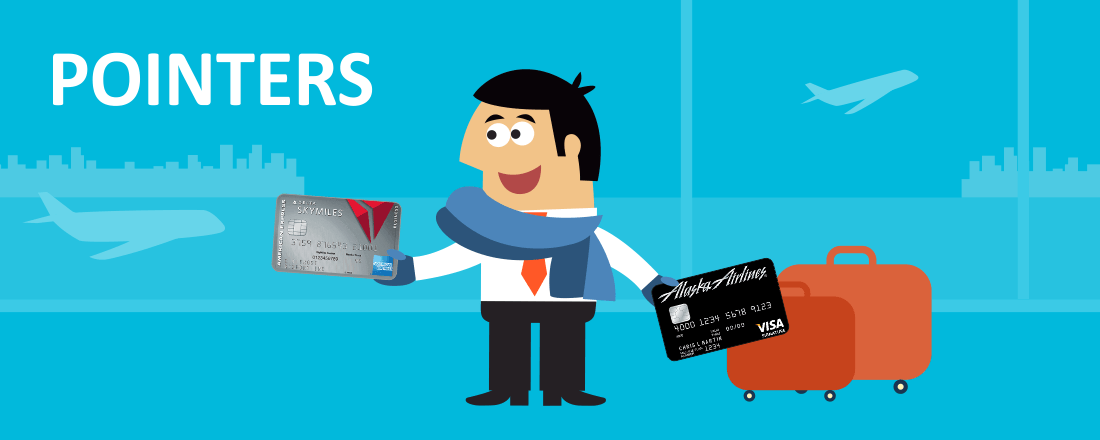
Alaska Airlines made headlines recently due to its successful bid to purchase Virgin America. Though it’s not yet clear how that merger will play out for loyal Virgin America customers, it is clear that Alaska will be able to expand its West Coast routes and transcontinental flights.
As one of the most profitable domestic airlines, Alaska’s growth hasn’t gone unchecked. Delta has recently muscled its way into Alaska’s home hub in Seattle, resulting in intense competition between the two carriers, particularly to popular West Coast destinations.
With all of that in mind, you might be wondering if it’s time to get an Alaska Airlines co-branded credit card. The airline has three offerings, two personal cards and one
That’s a bit misleading, though, because you don’t really have a choice between the two personal cards. You’ll get either the Visa Signature or the Platinum Plus based solely on your creditworthiness. If you don’t think you’ll qualify for the Visa Signature, it’s probably best to hold off until you improve your credit history. The Platinum Plus card doesn’t have nearly as much to offer.
But how good is the Alaska Airlines Visa Signature? Would it be better to go with one of airline’s competitor’s cards, like the Platinum Delta SkyMiles American Express card? Let’s take a look and see.
Here are the basics of the Alaska Visa Signature and Platinum Delta SkyMiles Amex:
| Alaska Airlines Visa Signature | Platinum Delta SkyMiles Amex | |
|---|---|---|
| Sign-Up Bonus | 30,000 Mileage Plan miles | 50,000 Delta SkyMiles and 10,000 MQM's |
| Earning Potential | 3x on Alaska; 1x all other purchases | 2x on Delta; 1x all other purchases |
| Annual Fee | $75 | $195 |
| Other Perks | Companion fare; annual $50 fare discount; Discounted Board Room lounge access; free checked bag | Companion ticket; $100 statement credit for Delta purcheses; ability to earn annual bonus miles and MQMs; free checked bag; in-flight discounts; priority boarding; discounted Sky Club access |
Here’s a closer look at what these two cards have to offer:
Welcome Bonus
At 50,000 miles, the Delta card comes with more miles than Alaska’s card. That’s a notable, but not huge difference that amounts to a one-way domestic saver ticket on Delta.
If you’re chasing status on Delta, the card also comes with 10,000 Medallion Qualification Miles (MQMs). And while MQMs are hard to come by, particularly without flying, it takes 25,000 MQMs to get Silver Medallion status. In other words, you still have to earn a lot more MQMs to get status.
With Delta card card, you have to spend $3,000 in the first 3 months to get the welcome bonus.
Flexibility
Delta has a few more options for spending miles since it’s a member of SkyTeam, one of the three major airline alliances. With SkyMiles, you can buy award flights on any of the 20 SkyTeam partners if you book through Delta.
Though not a part of any airline alliance, Alaska has 15 partners, including Delta, American Airlines, British Airways and Air France/KLM. You can get just about anywhere with Alaska’s Mileage Plan miles.
Earning Potential
The Alaska card offers 3 miles per dollar spent on Alaska Airlines. That’s among the best earning schemes you’ll get with a co-branded airline credit card. Delta offers the standard 2 points on Delta purchases.
Both cards give you 1 mile per dollar on all other purchases.
What Else Do You Get?
One of the best perks both of these cards offer is a companion ticket.
Alaska gives you a deep discount if you take a family or friend on a flight. Using the Companion Fare, you’ll pay $99 plus taxes and fees, which are at least $22. Delta, on the other hand, gives you a free companion ticket, though you still have to cover the taxes and fees which can be as high as $75.
With either companion ticket you have to fly on the airline itself or on a codeshare. You cannot fly on a partner airline. Both passes are good for round-trip coach tickets within the U.S. or Canada only, and both renew annually.
Though Alaska charges $99 for the companion pass, you can get tremendous value from the ticket because you’re allowed two stopovers per roundtrip. For example, you could fly from Los Angeles to Anchorage, and stop in Portland for a few days on the way. On your flight back, you could stop for a few days in Seattle. The price for the companion ticket for all four flights is still just $99 plus taxes and fees.
The Delta card really outdoes the Alaska card by offering an annual bonus for meeting a minimum spend on the card. If you spend $25,000 in a year, you’ll get 10,000 MQMs and SkyMiles, and $50,000 in purchases earns a total of 20,000 MQMs and SkyMiles. That’s only 5,000 MQMs short of Silver Medallion status. If you can spend that much annually, it’s a great way to maintain status.
Both cards offer a free checked bag and discounted airport lounge access. Delta also gives you priority boarding and in-flight discounts.
Cardholder Perks
The Delta Amex card gives you a few more cardholder perks, such as travel accident insurance, a global assistance hotline and
Both cards include roadside assistance, car rental loss and damage insurance, zero liability and purchase protection.
Annual Fee
At $195, the Platinum Delta SkyMiles card has a notably higher annual fee. Alaska charges only $75. Once you calculate the benefits, though, the net cost of owning either is closer than you’d think.
Assuming you use the companion fare benefit, you’ll pay $99 with Alaska. Delta’s companion pass, on the other hand, is free. That brings the balance of cost for the two cards to within $20.
And both cards also offer statement credits for airline purchases, bringing down the net cost even further. Delta gives a $100 credit for the first year you have the card, and Alaska offers a $50 discount annually.
Which Card Do You Get?
If you’re chasing elite status, the Delta card has the advantage over Alaska’s offering. If you can reach the minimum spend, you’ll have enough for Silver Medallion status the first year you have the card without even flying. With the yearly bonus, you can easily maintain status and earn almost enough miles for a domestic round-trip ticket.
If I didn’t think I could meet Delta’s notable minimum spend to earn the annual bonus, the cards would be pretty comparable.
Alaska’s companion fare benefit isn’t as generous as Delta’s since you still have to pay $99 for the ticket, but the Platinum Delta card’s annual fee is higher. Alaska’s yearly $50 fare discount is a nice perk, too, but Delta has a bigger welcome bonus, offering both more miles and $100 statement credit.
If I planned to keep the card for several years and didn’t think I’d make at least $25,000 in purchases annually, I’d probably go with Alaska. I really like the carrier’s generous stopover policy on companion fares and award tickets. Plus the 3x earning on Alaska purchases is excellent. If I was planning to spend a lot on the card, though, the Delta card’s annual bonus is hard to beat.


